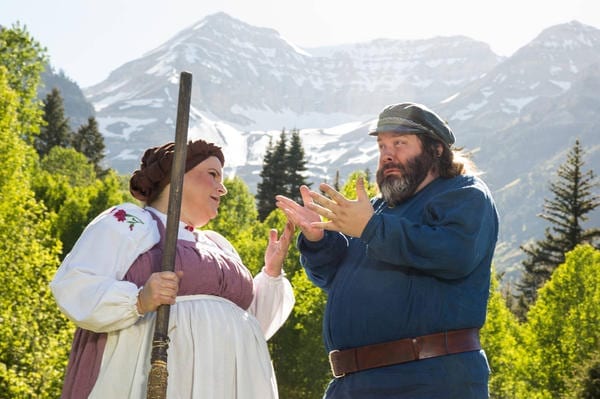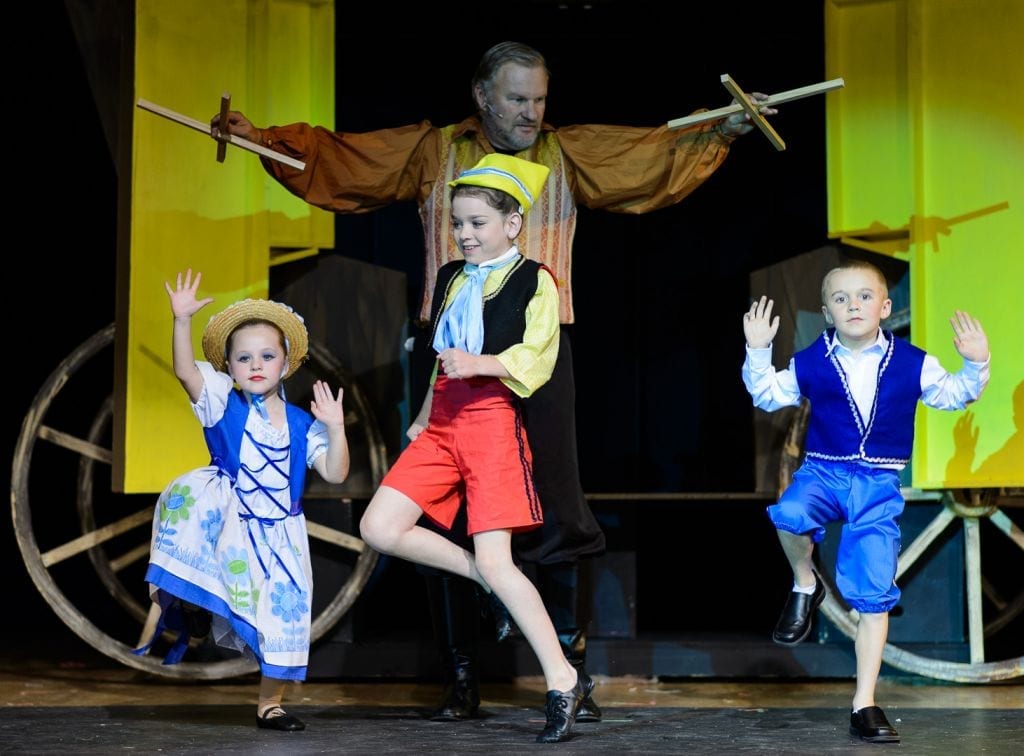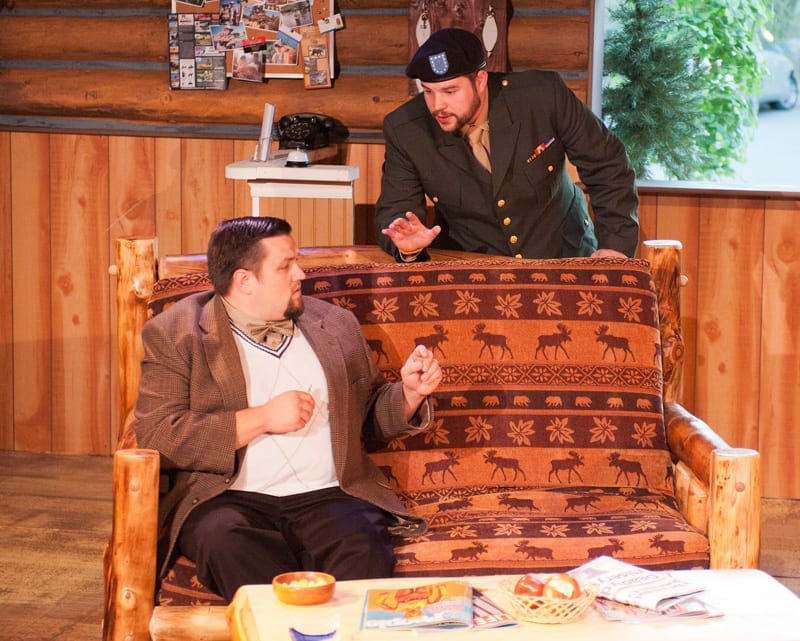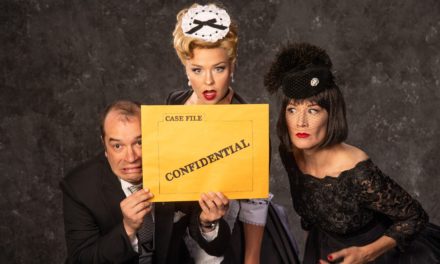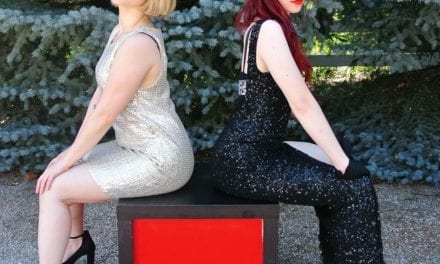SUNDANCE — There is something magical about theatre outdoors, and for summer theatre at Sundance Mountain Resort that feeling is amplified. The performance experience is enhanced by the drive up Provo Canyon, the winding road to the resort, and the tractor ride up to the amphitheatre nestled in the mountainside. The journey creates anticipation that is only sweeter if one has experienced Sundance theatre before. Enthusiastically staged with local talent, Sundance is summer stock at its best, and this year’s Fiddler on the Roof, directed by James Arrington, is no exception.
Always a crowd-pleaser, this year marks the 50th anniversary of Fiddler on the Roof, which played on Broadway for nearly ten years following its 1964 debut and which was adapted to an Oscar-winning film in 1971. Based on the short stories by Sholem Aleichem, the musical (with a book by Joseph Stein, music by Jerry Bock, and lyrics by Sheldon Harnick) tells the story of Tevye, a Jewish milkman, who lives in the village of Anatevka in pre-revolutionary Russia. He loves his faith (its theology and culture) and repeatedly touts the traditions that surround him. He also loves his five daughters, and his greatest hope is for them to marry well. The play follows Tevye as he watches the three eldest find love in unexpected and disappointing places. Comedy ensues, but so does pathos, and the heartbreaking violations of Tevye’s traditions are accompanied by similarly painful anti-Semitism that eventually forces the entire population of Anatevka Jews into refugees. Fiddler on the Roof is a story of family, of the “papas, mamas, sons, and daughters” as expressed in the famous “Tradition” number, but it is also a story of humanity and the degradations it can inflict.
Any production of Fiddler on the Roof is only as good as its Tevye, and fortunately, David W. Stensrud delivers. A seasoned performer, Strensrud shows his character’s traits without caricature. Tevye is the faithful Jew, the life of the party, the (sometimes) fearful husband, domineering father, community leader, and misguided biblical scholar. He is silly when the play calls for it and tragic when the drama turns solemn. Present in almost the entire play, Stransrud successfully executes every scene and leads the story seamlessly (no doubt assisted by Arrington’s skilled direction).
Most of the supporting roles are similarly well-equipped by talented professionals, including Marcie Jacobsen as Golde and Jake Ben Suazo as Lazar Wolf. Jacobsen is the perfect partner for Stransrud on stage, providing a female foil to match Tevye’s boisterous presence. The two work well together, and their timing is impeccable. Suazo’s Lazar Wolf is both comic and sympathetic, adding much to the production despite his limited time on stage. The young characters in the show are given life by current acting students at UVU and BYU. Though nothing completely disappoints, there are a few performers falling into stereotype or with a propensity to overact. This is not the case with Tevye’s daughters, however, who shine in all of their roles. Sariah Hopkin, in particular, gives an emotional performance as Chava, Tevye’s third daughter, who marries outside of the Jewish faith.
The performance of all of the actors is clearly enhanced by Arrington’s direction. The production is brisk, well-spaced, and the focus is on the “tradition” of Fiddle on the Roof. There is no “reimagining” or unnecessary thematic highlight; rather there is a simple concentration on emotional story-telling that is so integral to the play and its history. Fiddler on the Roof is not the visual extravaganza of today’s Broadway successes (although there are simple and effective “special” effects that occur during “Tevye’s Dream”), and the set design by Stephen Purdy is appropriately straightforward with painted house exteriors that turn simply to reveal the homes and public places that the characters inhabit. The neutral browns of the set are subtly highlighted in bright colors, and, on the whole, the stage looks perfectly suited to the pine trees that surround it and the rising peaks all around, as if Anatevka was located on just such a mountainside. In fact, it is so suited to its locale that the painted trees to the side of the set are almost distracting. It seems a pity that the stage doesn’t more easily accommodate incorporating the natural elements surrounding it into the production.
The costumes by Becca Bailey Klepko are appropriate and bright and suited to each character, as is the make-up and hair design by Lara Beene, who was tasked with creating side curls for the male Jews. Both excellently highlighted the culturally-specific appearances of Russian Jews in a way that fit into a Broadway musical. In short, all of the design supported the production, and nothing was distracting.
Less could be said about the choreography by Jennifer Hill Barlow. While most numbers were satisfactory, standard summer stock fair using simple choreography that is necessary for a small stage and a large cast, the choreography in “Tevye’s Dream” was distracting. In it, the “dead” characters incorporate choreography from Michael Jackson’s Thriller. While it may invoke a smile of recognition from the audience, it distracted from an otherwise “traditional” production. That said, the Thriller inclusion could easily be a highlight for audience members with different expectations from the production. One of the reasons theatre at Sundance is so great is that it attracts a wide audience. After bringing a first-time theatre-goer to a production there, it won’t be hard to talk them into going the next summer.
If you do make the trek up Provo Canyon, there are some practical things to consider. The show goes on no matter the weather (there will be no refunds for rain, so if it calls for it in the forecast, bring ponchos and umbrellas). Wear warm clothes, good shoes (if you decide to walk up or down the hill instead of being pulled by tractor) and decide whether you would like to eat BBQ on site (a nice option that also adds to the performance experience). Blankets are a must if you have grass seats, and they also help cushion the benches. It is theatre in the “rough,” to be sure, but that’s really what makes it so enjoyable.

